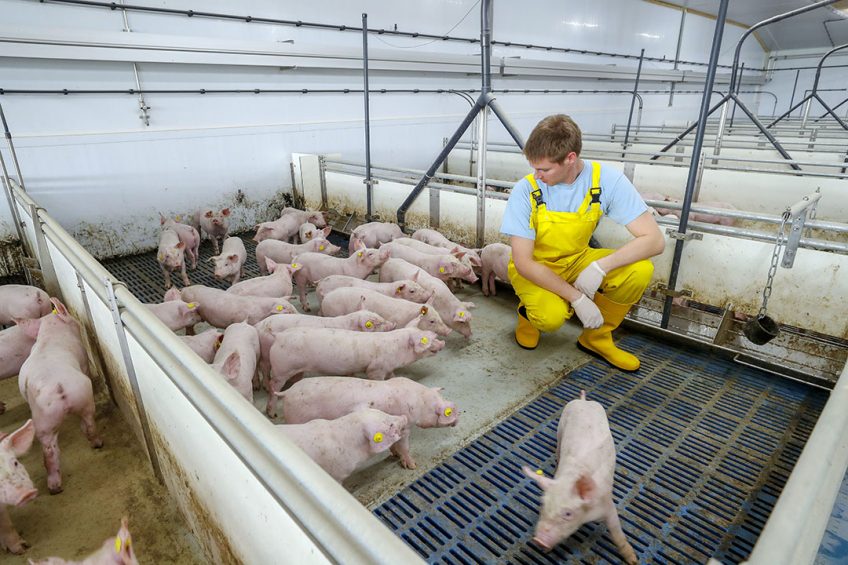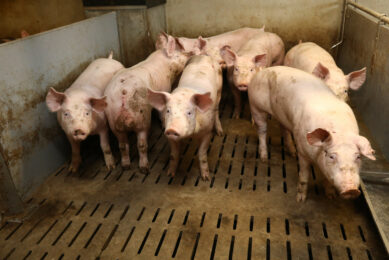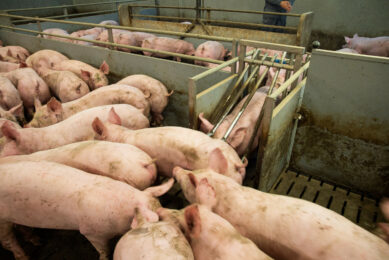Pigs identify voice as part of humans

Pigs identify the human voice as part of a human being present. The animals responded differently to human presence when no voice was broadcasted.
That was the result of a research carried out by scientists of the French National Research Institute for Agriculture, Food and the Environment (INRAE), which was published recently in the peer-reviewed journal Applied Animal Behaviour Science.
Human voice facilitates human-pig relationship
The researchers hypothesised that the human voice facilitates the development of the human-pig relationship. In order to do so, they studied the behaviour of 90 weaned female piglets divided into 3 treatments:
- A. Human presence with voice. In this treatment, an idle experimenter was present in the pen for 5 minutes per day, for 3 weeks and a female voice was broadcast from a speaker.
- B. Human presence without voice. In this treatment, an idle experimenter was present in the pen for 5 minutes per day, for 3 weeks, but instead of a voice, a recorded background noise was broadcast.
- C. Control group. For these piglets, only routine husbandry care was provided.
Test 1: human voice is used with piglets
The scientists then carried out 2 tests. In test 1, the scientists broadcasted the voice for the piglets in group A and background noise was broadcasted for the others. In this test, piglets from group A and B investigated the experimenter earlier and more often than in group C. The piglets in group A moved sooner in the pen than in group C.
Test 2: no human voice is used with piglets
For test 2, only the background noise was broadcast – that includes the piglets in group A. In this 2, the piglets expressed more stress reactions; their latency to move was longer compared to the others. The piglets in group A also had more physical and vocal interactions: they stayed in the experiment area longer than piglets in group B and group C, and grunted more.

More on pig behaviour: Enriched environment is beneficial for pigs
Necessary properties
The researchers concluded that broadcasting a human voice did not modify the pig response to human presence and handling in auditory conditions similar to the interaction sessions. However, not broadcasting a human voice induced stress responses and increased interactive behaviour, which suggests that piglets identify the human voice as part of the experimenter’s necessary properties.
The research in Applied Animal Behaviour Science was authored by Sandy Bensoussan, Raphaëlle Tigeot, Marie-Christine Meunier-Salaün and Céline Tallet, all attached to INRAE, France.











